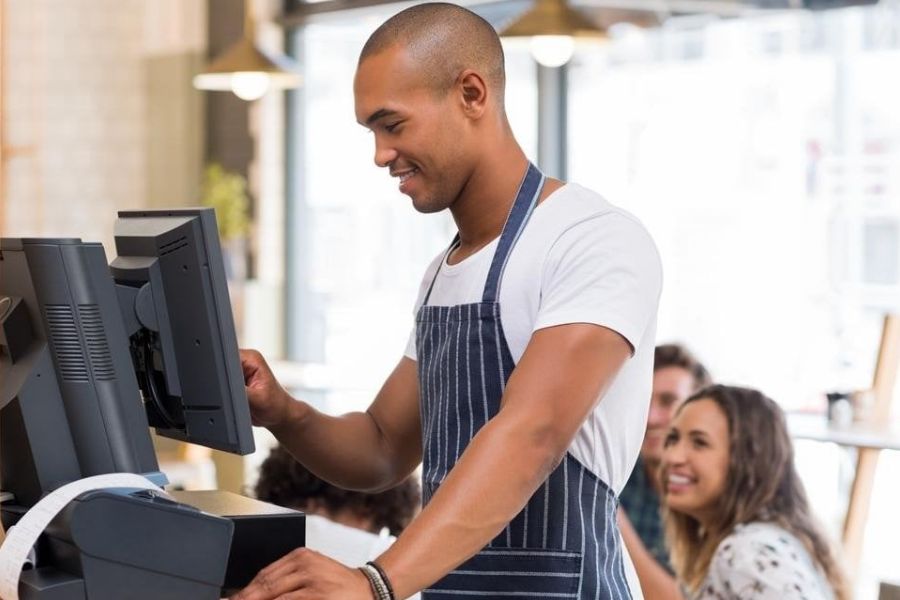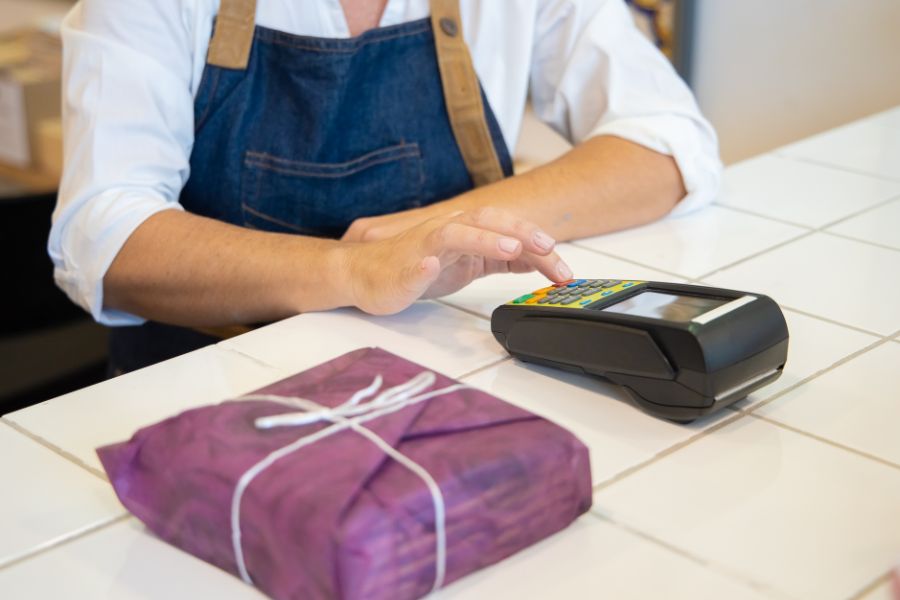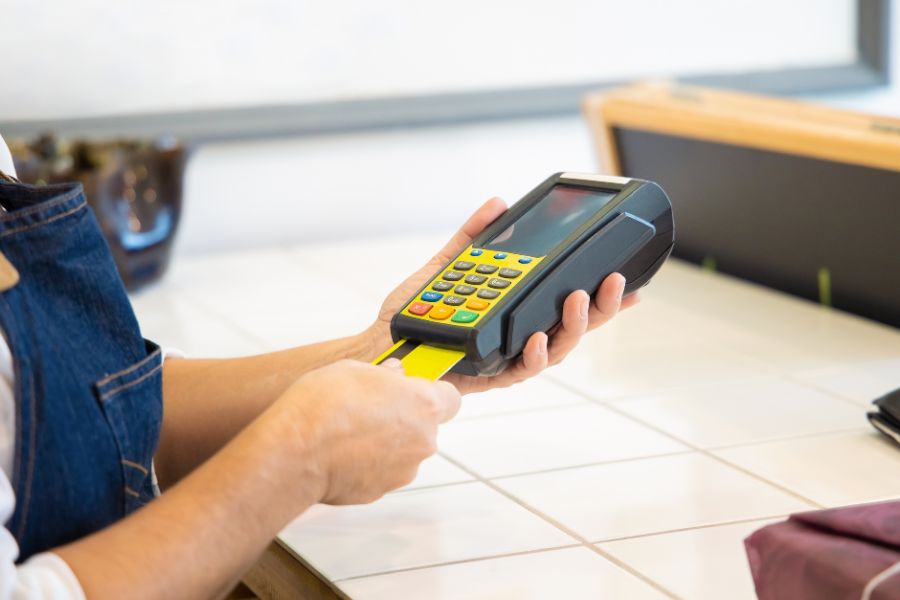It is a fact that POS systems benefit every business in the food & beverage industry. We have learned about how food & drink retailers benefit from POS systems. Today, it’s about POS systems for another food and beverage industry business: restaurants. In this article, we will be your guide to help you understand the difference between restaurant and retail POS systems.
Saving the best for last, we will unveil the top 5 restaurant POS systems in 2023 for your business’s success.
Differences between restaurant POS systems and retail POS systems
Even though POS systems are vital for both restaurants and retail businesses for everyday smooth operations, these systems function in considerably different ways. At its simplest, the order and check-out process are the 2 factors making significant differences between POS systems specifically designed for the two businesses.
Retail POS systems
In a retail business, a purchase is made by a customer bringing items to the counter or wherever a POS terminal is placed, and the clerk scanning the items’ barcode. That’s when POS software assigns the items to a specific transaction. Then, the customer pays by their preferred payment options and chooses their preferred delivery method (optional). The clerk then prints or emails the customer a receipt. Only then the transaction is completed and closed immediately.
The POS software for retail works because all the products are assigned to the inventory with a certain stock level and a barcode attached. After the order is placed and the information is input to the POS software, a retail POS system software completes and closes the transaction.
Some key POS hardware pieces are barcode scanners, scales for weighted items, and label printers for items without barcodes.
Restaurant POS systems
On the other hand, restaurants work in a very different way. In restaurants, a front-of-house staff member inputs customers’ orders into the POS system, which is immediately relayed to the back of the house. Depending on the type of restaurant, the order can then close immediately (i.e. takeaway restaurants) or remain open until the end of the meal (i.e. fine dining restaurants).
As a result, in a restaurant POS system, the products, or menu items to be more exact, are assigned to inventory with descriptors or graphics of each dish, instead of barcodes. After the order is placed and the information is input, the POS passes this information to the back of house. Only then, the back-of-house locations (kitchen, bar, etc.) can update the inventory and begin preparation.
There are some distinct POS hardware equipment pieces for restaurants such as receipt printers for customer receipts, kitchen printers for printing kitchen tickets, etc.
Top 5 restaurant POS systems in 2023
Clover POS
Clover POS is suitable for online expansion. It is well-designed for restaurants to manage orders, payments, and all of the needs and requirements for front and back-of-house. This POS system is suitable for small to medium-sized restaurants like cafés, food trucks, etc.
Clover can work well on laptops, tablets, and other mobile devices. Moreover, it also integrates with various third-party companies to provide you with additional features. Two to mention our email marketing company, Mailchimp, and e-commerce company, Shopify.
It doesn’t take too much time and effort to get used to Clover and its interface is quite straightforward and easy to learn. In addition, it even sells almost all of the hardware pieces that you need for your POS system.
Key features:
- Online order & delivery
- Customer engagement (contact lists with options for promos, rewards, and private feedback)
- Strong analytics
- Guest seating
- Bill-splitting
- Tableside service
- Custom floor plans
- Limited support hours
- Serves quick-service businesses
Toast POS
Toast POS offers Android-based POS systems for business owners who are Android lovers and tired of seeing iPhones, or iPad literally everywhere. It offers all the essential POS features categorized into an easy-to-understand interface, named sales, billing, inventory, layout management, analytics reports, and loyalty programs. Even better, Toast provides access to the features it lacks with numerous third-party integrations.
Toast supports a wide range of venues, from bars, bakeries, casual, fast-casual, fine dining to even delivery services, and online ordering. This makes Toast POS a favorable option for restaurants that are expanding and want to meet their customers wherever they are.
Key features:
- Supports android
- Offline mode
- Strong menu customization
- Online ordering
- Payroll management
- Custom kitchen communication
- Delivery service
- Inventory management
- Shift management
- 24/7 Support
- Serves all business sizes
Square POS
It can be said that Square POS is a match made in heaven with quick-service restaurants. Square POS provides dedicated solutions for table service, counter service, bars & lounges, coffee shops, bakeries, and food trucks, pop-ups, you name it. It is really well-known and preferred among quick-service restaurants.
Additionally, Square is famous for its ease-of-use and feature-rich restaurant POS system, and a timely support team.
Key features:
- Menu customization
- Layout management
- Strong analytics
- Customer feedback
- Curbside pickup
- Per-item sales tracking
- Inventory control
- Table management
- Discounting.
- 24/7 Support
- Serves all business sizes
ShopKeep POS
ShopKeep POS is a mobile-based restaurant POS system to fit the needs of small and medium-sized businesses. It can fulfill both quick-serve systems and full restaurant systems with nicely designed and intuitive mobile apps.
ShopKeep’s restaurant solution provides essential POS features across front-of-house and back-of-house operations. Furthermore, restaurant businesses can build marketing campaigns around special offers or future events, leveraging available features. ShopKeep also partners with Mailchimp as a third-party integration.
Key features:
- Customer marketing using the service’s email receipt function
- Mobile app
- Inventory management, including triggered reorders and raw goods tracking
- Reporting and Analytics
- Staff management
- Check to split
- Time clocking for hourly staff
- 24/7 Support
Lightspeed POS
A library of integrations is exactly how we can describe Lightspeed POS. The wide integration range helps this restaurant POS system stand out as one of the most flexible players in the field, plus, it is a mobile POS. Lightspeed enables third-party apps to plugin easily, allowing customers to have numerous extra features to enrich their restaurant POS system based on their preference.
And don’t even worry that they are all plugins. Lightspeed POS offers you enough important features for a restaurant POS system with the key features listed below.
Key features:
- Tableside ordering
- Integration-rich
- Kitchen display
- Menu management
- Adjustable floor plans to update settings on the fly
- Reporting and Analytics
- Food cost and Inventory management
- 24/7 Support
- Serves all business sizes
To wrap it up,
We hope that, with today’s article, we together have successfully understood what are the differences between a retail POS system and a restaurant POS system. Furthermore, with the list of top 5 POS systems for restaurants in 2023, you could gain some clues to choose the best one for your business.
Or else, if you are operating other types of businesses, fashion and accessories, footwear, sports and outdoors, furniture and homeware, you name it, and long for globally-standard POS software, we are right here. At ConnectPOS, we take our pride in developing one of the most technology-advanced software for POS systems, which fits with various business types. Find your type here. Contact us, or book a free trial for further assistance!
ConnectPOS is a all-in-one point of sale solution tailored to meet your eCommerce POS needs, streamline business operations, boost sales, and enhance customer experience in diverse industries. We offer custom POS with features, pricing, and plans to suit your unique business requirements.




